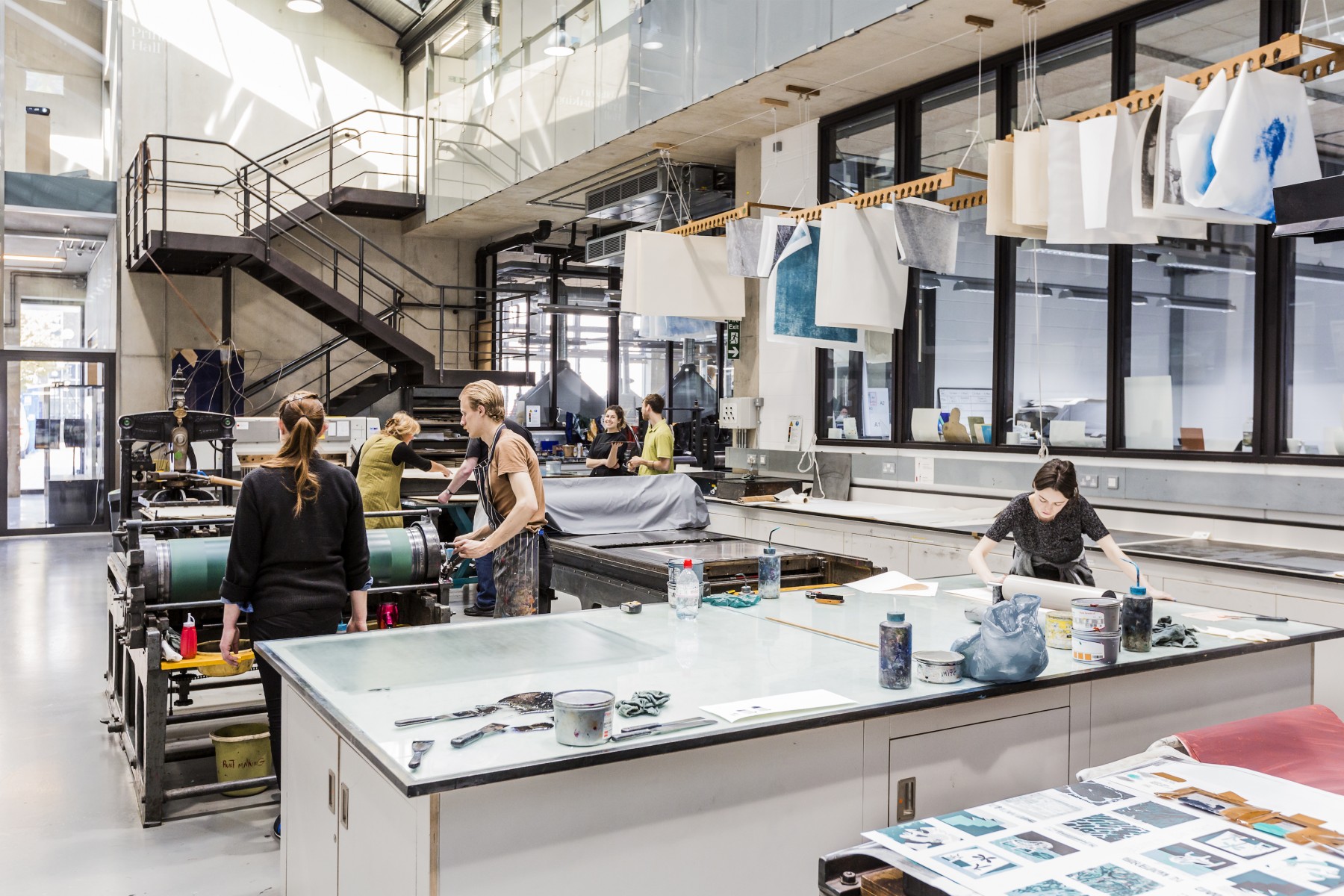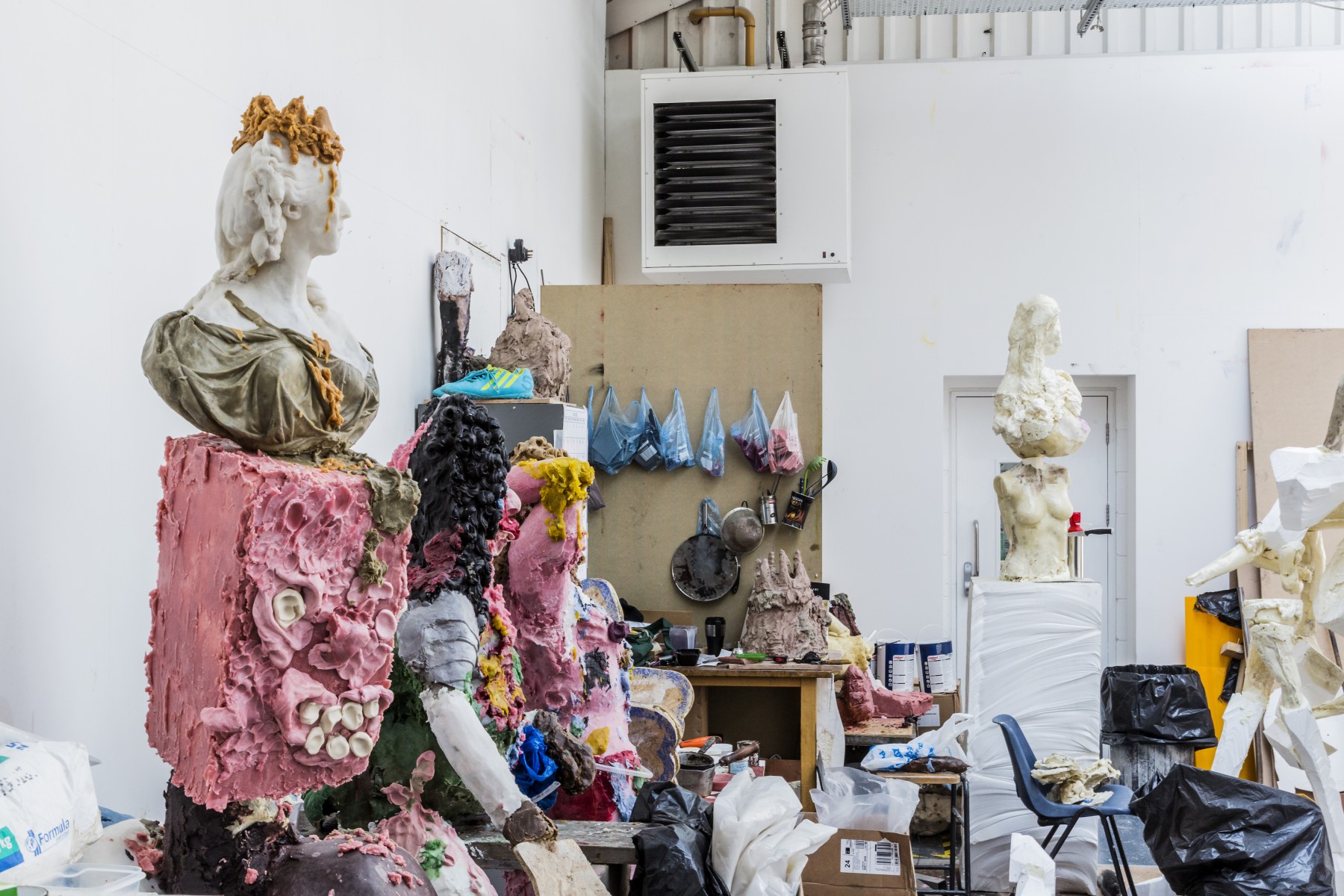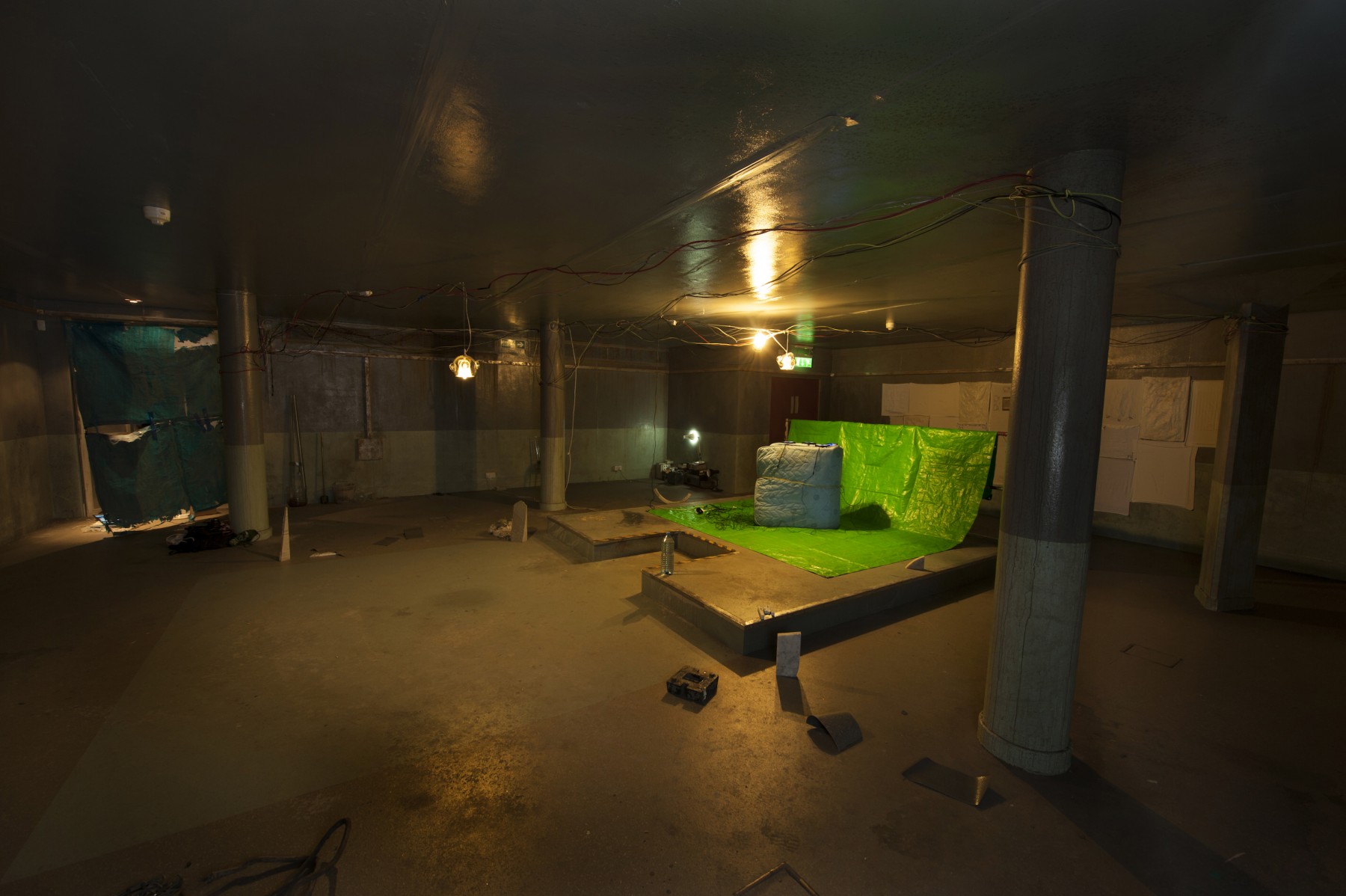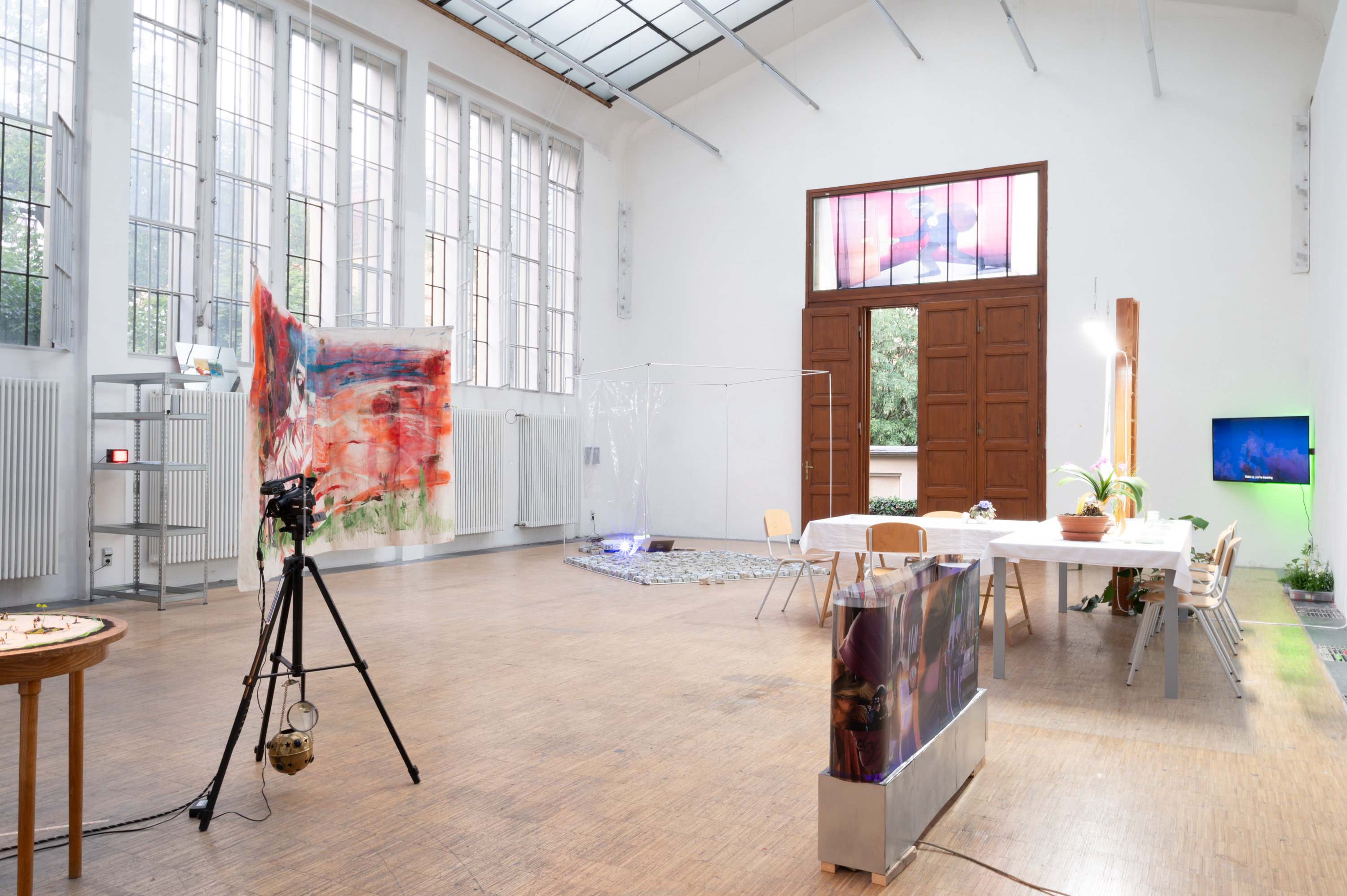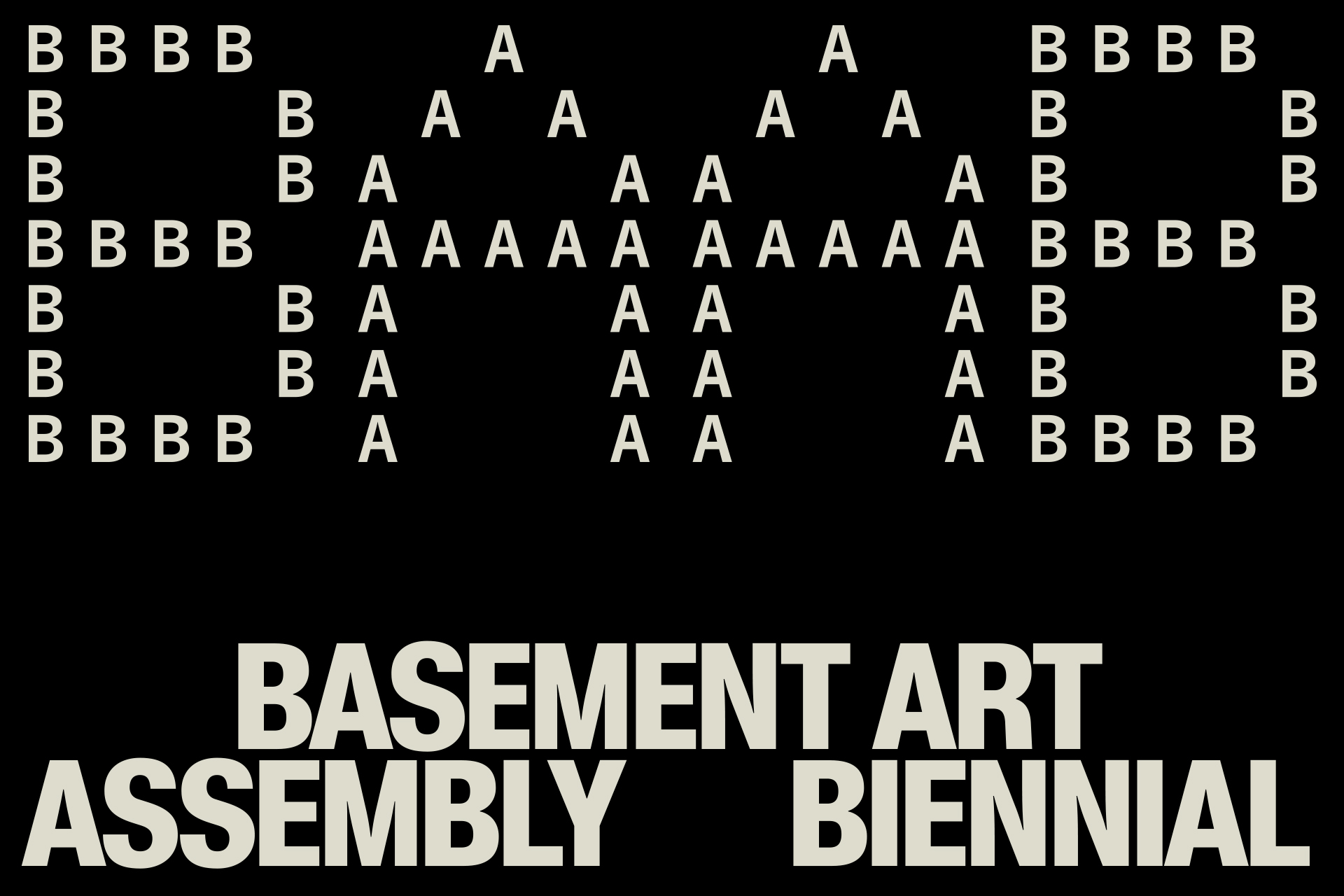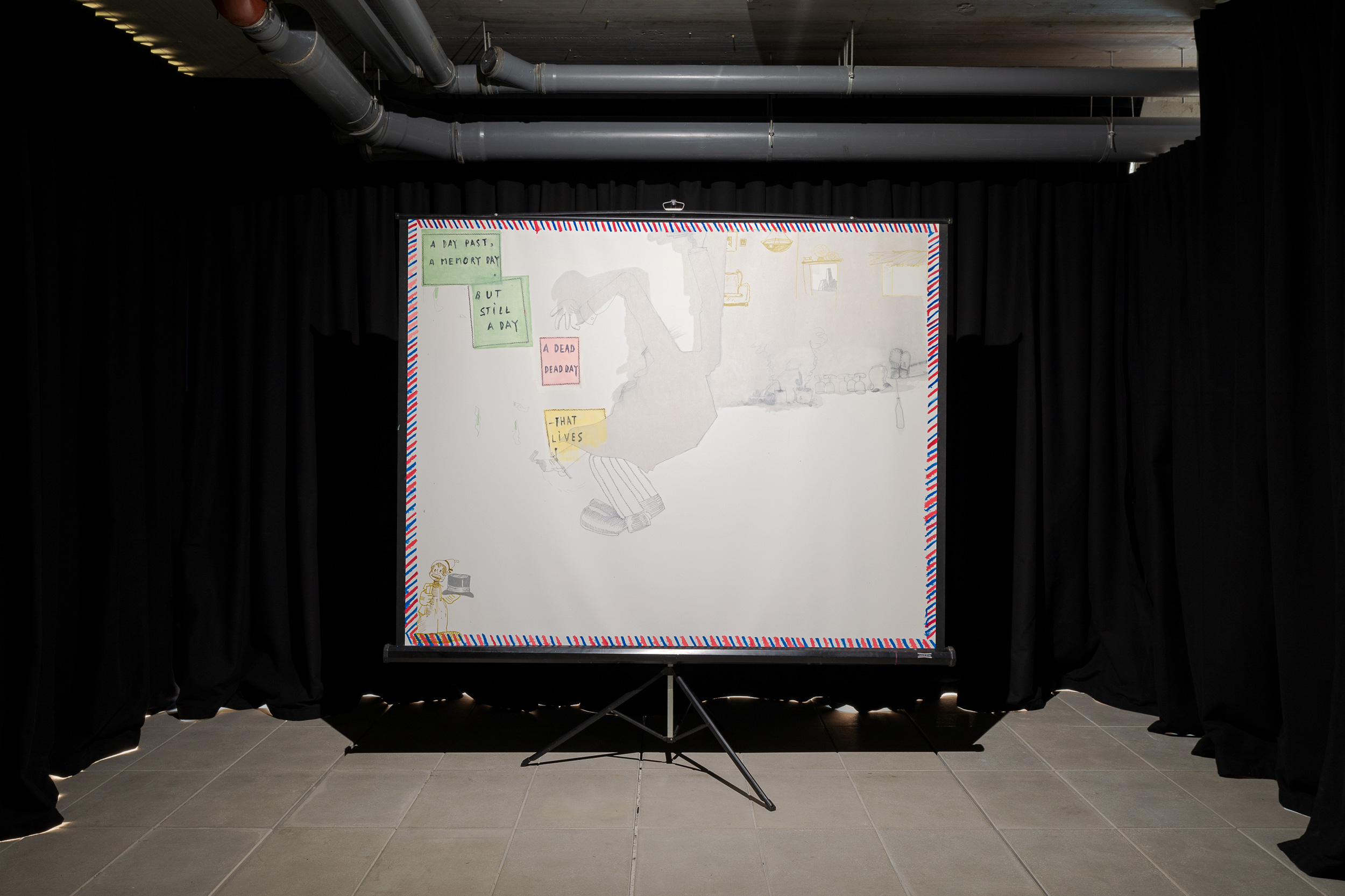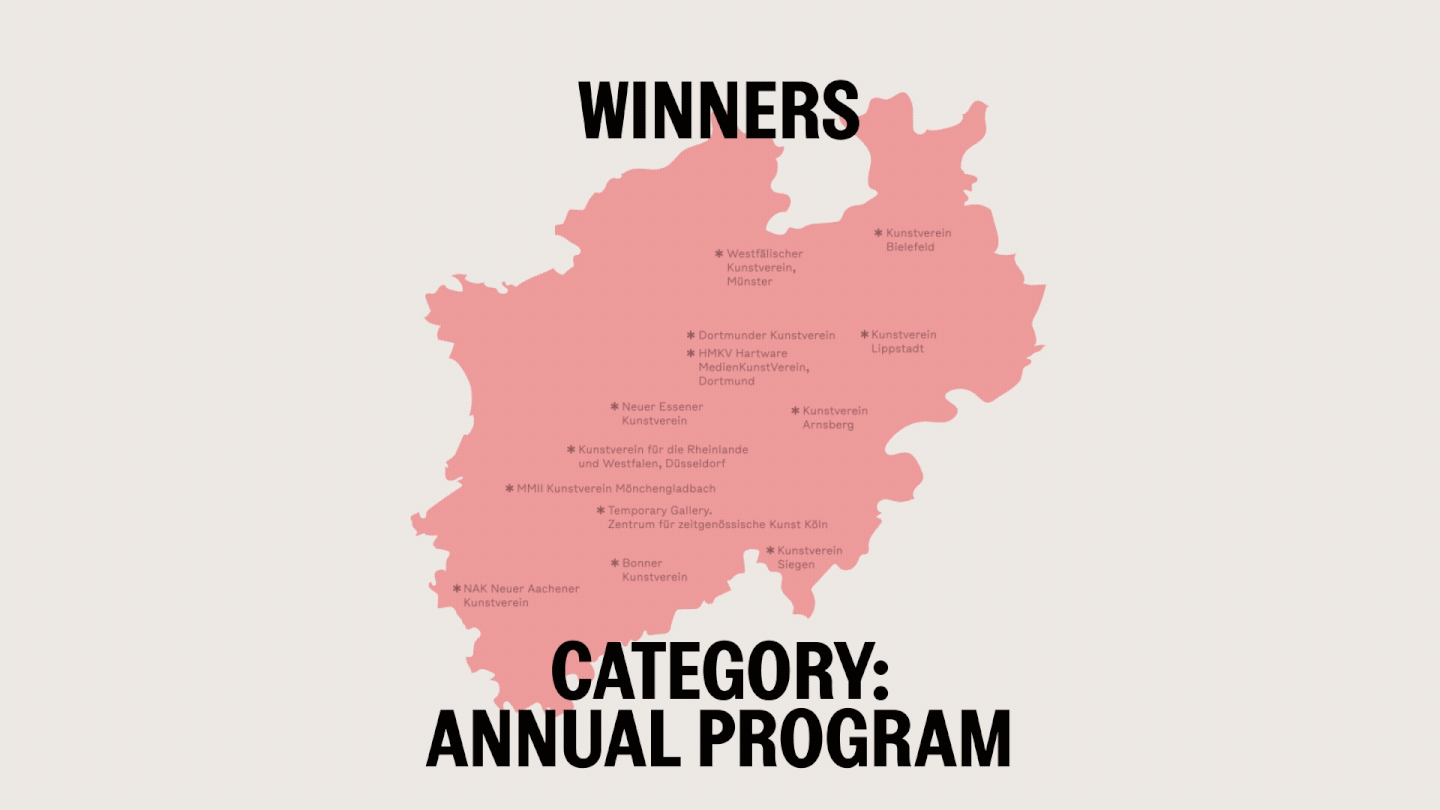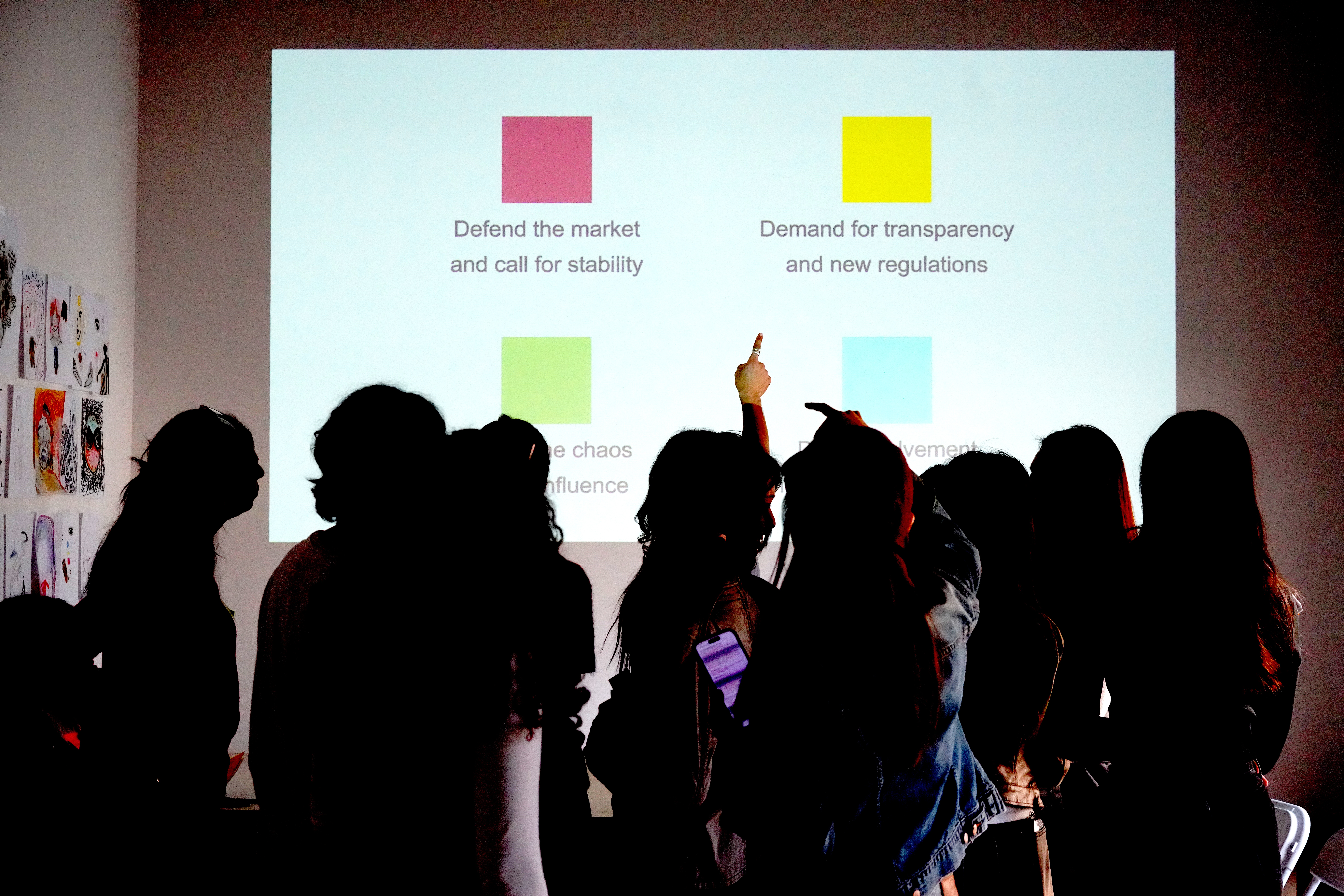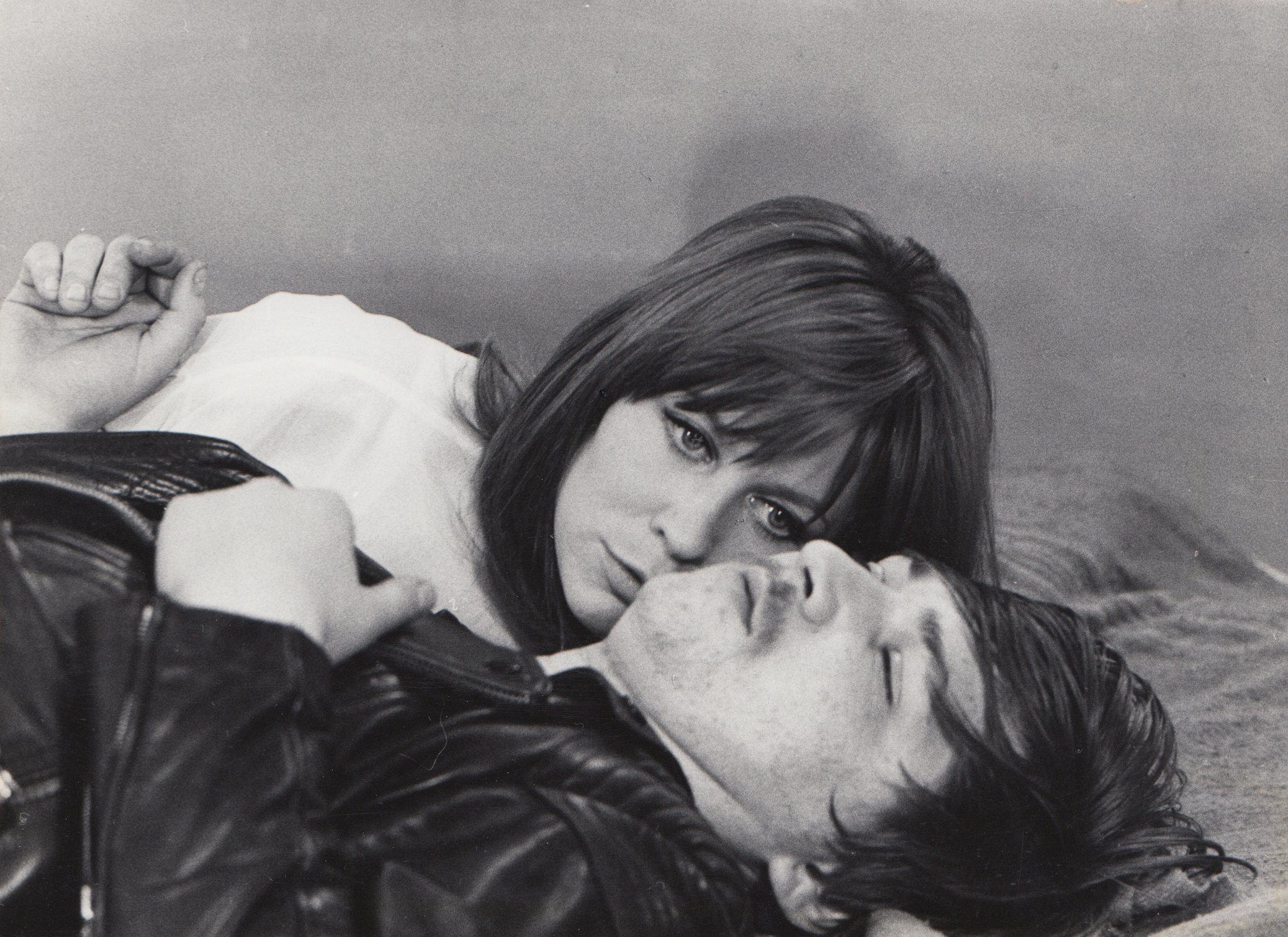What Kind of Art Education [Today]?[footnote The title is a reference to a series of statements, letters, and interviews that appeared under the title “What Kind of Art Education?” in Studio International in the fall of 1966.Over the course of three months, artists, historians, designers, and educators—including Richard Hamilton, Herbert Read, Misha Black, and Roy Ascott—offered their thoughts on the changing state of art education in the United Kingdom, as well as its future.]
When founded in 1837 as the Government School of Design, the Royal College of Art initially focused on industrial design. Its mandate: to train future tradespeople, such as textile and ceramics workers, in the techniques of art and design as a means to improve British industry, which lagged behind French and German manufacturing. At the time, this meant a rigorous education in drawing, with an emphasis on ornament and design. In the 1850s, the school became part of Prince Albert’s plan to construct a colony of cultural institutions in South Kensington around Hyde Park, including a concert hall (the Royal Albert Hall) and museums dedicated to science and natural history. It moved to this area from the college’s first home at Somerset House, and its collection of casts, architectural fragments, sculpture, and design objects used for the purposes of instruction formed part of the collection of the new Museum of Manufacture (now the Victoria and Albert Museum). Although it was renamed the Royal College of Art in 1896, it was not until the tenure of William Rothenstein in the 1920s and ’30s that it became a crucial center for the postgraduate training of fine artists. Rothenstein’s tenure produced two of the school’s most distinguished alumni, Henry Moore and Barbara Hepworth, both of who have come to strongly define British modernism. Distinguished fine artists have continued to emerge from the RCA’s halls, including prominent Pop/Op figures such as Peter Blake, David Hockney, and Bridget Riley; material experimenters like Richard Deacon and Tony Cragg; and the brash YBAs Tracey Emin, Jake and Dinos Chapman, Chris Ofili, and Gavin Turk.
As one might imagine, the RCA has been rethought and restructured over its 178-year history. It has moved, changed focus, and expanded; in many ways, renewal and redevelopment are part of the school’s DNA. Now boasting a student body of over 1,400, the South Kensington facilities have become inadequate. Three modern multistory buildings clustered around a small plaza-like street sit in the shadow of the grand Royal Albert Hall. Together they form a tight network of classrooms, workshops, offices, exhibition spaces, and research facilities, in which students and faculty use every conceivable space. One evening I sat down to a packed lecture by artist Lawrence Abu Hamdan in a room that appeared to be something between a hallway and a lecture hall. Hence the necessity of the Battersea expansion, a cluster of clean, modern buildings just off Battersea Bridge Road and steps from the south bank of the Thames. The Battersea campus has eased some of these spatial limitations, allowing the studio-based students in the School of Fine Art to breathe more easily. While the sculpture program has had a presence in this section of south London for many years, the remainder of the School of Fine Art (the painting, printmaking, and photography programs) only began the migration over to this side of the Thames in 2010. Studios are shared but generous in size, possessing qualities and amenities suited to each discipline. While the sculpture studios feature a more open plan and high ceilings, and include an on-site foundry, the printmaking facilities in the recently opened Dyson Building feature all of the machinery needed for different printmaking processes, including intaglio, lithography, and screen printing, as well as a digital studio with 3-D printers. When I met with a group of sculpture students, all of them mentioned the accessibility to facilities and the technical staff as a major boon. As one first-year remarked, “Everyone is there to enable you to do whatever you want.”
Because so much is available to students at Battersea, it can feel like a world unto itself, a bubble—often a desirable condition for postgraduate art education. I visited the campus to shadow the end-of-term critique in the sculpture program on its third day. As course leader Jordan Baseman suggested, the purpose of the critique is “to bring the world” into the insular space of the studio and to “take [the student] out of it.” This entails training young artists in how to engage with the network of artists, critics, and curators who will write about, program, and commission their work—a necessary skill in staying afloat in the contemporary art world. Around six years ago, the mid-year crit didn’t exist; the only form of structured feedback a student would receive from outside critics occurred at the end of the first and second years. As is increasingly the case with so many art schools, one of the RCA’s more recent goals is to foster these points of contact. It has proven successful. External examiner Laurence Sillars, curator at the Baltic Centre for Contemporary Art in Newcastle, has exhibited the work of RCA graduates, and a quarter of the artists in the most recent New Contemporaries exhibition at the ICA in London (a showcase of current and recent MFAs across the UK) were RCA students or grads.
Art critic Gilda Williams (also a reader in the MFA program at Goldsmiths) and interdisciplinary artist Ivan Morison (whose work with partner Heather Morison has been commissioned by the Tate Modern, Whitechapel Gallery, and The Hepworth) were the critics for the group I shadowed. Arriving in the middle of the day’s schedule, I slunk in as they gathered around one student’s work: a series of sculptures and photographs that played with the nature of each object’s material composition. Given the stakes of the situation, all of the students came ready to perform, whether as artist or critic. A young man, whom I assumed to be the maker of the sculptures and photographs, smartly responded to the incisive comments issued by both the critics and his fellow students—most of which concerned the artist’s process, and the tension created between the still photographs and apparently fluid objects. As the conversation wore on, however, it became clear that another student was in fact the artist. As Baseman informed me, the only ground rule for the critique is that the maker of the work must not speak, a way to teach artists to give up control of their work. After all, in a global market the work will end up speaking within and for a host of contexts; letting go helps one achieve success. In the case of this critique, however, students played one another, a method suggested by Morison at the beginning of the crit. Reminiscent of activities and assignments developed by experimental art educator Roy Ascott to help students break out of their dogged patterns of behavior in the studio, the exercise in role-playing gives the maker some critical distance from her work. As one student remarked while reflecting on her experience, “[it] allows you to react and see what you think about your work.”
However, unlike the behaviorist exercises of the 1960s, this contemporary version of artistic role-play is pitched towards the work’s reception (not production), and reveals how, in the postconceptual art school, the language used to delimit the work is as crucial as its creation. The kind of artist the RCA envisions is not just a maker or producer, but also a marketer and spin doctor, an operator within a vast network of possibilities. While the end-of-term critique is one opportunity to teach students how to operate, each program has developed its own relationships with outside institutions to increase their connectivity to this network. To this end, Baseman has secured two prizes for students in the sculpture program: one, a studio space at the esteemed Matt’s Gallery in East London with mentorship from the gallery director Robin Klassnik; and two, a month-long residency at Yorkshire Sculpture Park. In the printmaking program, students can participate in an annual exhibition at a commercial London gallery as well as regular publishing projects, with funds provided by the school and a well-known benefit postcard sale. Publications also serve as promotional tools for both the school and students. The wealth of printed material produced across the RCA is impressive. Ranging from exhibition catalogs (from the Curating Contemporary Art program) to anthologies of writing (from the Critical Writing in Art & Design program) and artist books, many programs actively document their activities with publications. In many cases, the production of a book is an integral part of the course, as either a demonstration of craft, scholarship, or professional skill.
While the RCA is keen on training artists to navigate the current postdisciplinary art world, it has resisted the trend to dissolve distinct disciplines into a single “fine art” program. Rather, the school has maintained four areas of study, which are informed by specific media, techniques, and genealogies: sculpture, painting, printmaking, and photography. Juan Cruz, the new director of the School of Fine Art (after spending six years at the helm of the Liverpool School of Art), feels that the RCA upholds a “radical traditionalism.” While a student might be based in a particular program, she can choose to either remain embedded within that discipline or expand outwards from it. As printmaking program leader Jo Stockham notes, the RCA is unique at a moment when many UK institutions have divested from certain types of equipment and technical processes: “What there seems to be a demand for is an in-depth understanding of particular histories and a questioning of whether they are relevant or not.” Despite the RCA’s maintenance of traditional disciplinary divisions, the school has made room for more recent art practices, establishing two “pathways” that students can pursue while enrolled in one of the four programs. As Juan Cruz suggests, the pathways offer a “responsive structure” for the education and evaluation of practices for which the concept of a medium-based discipline is far too rigid.
To foster interdisciplinary student explorations, all fine art students have access to all the facilities and can sign up for the same technical instruction across disciplines. As Stockham notes, students often seek out the points of contact between the different programs on their own terms. While her students in the printmaking program certainly share aesthetic concerns and problems with those in painting and photography, some have even explored sculpture through the lens of the print, considering the “relationship between the matrix and the mold.” In my short visit I met a sculptor who also works with photography, and a student who, although she came to the RCA for its on-site foundry, has now turned to filmmaking. Avenues of exchange also exist across the entire college. The Critical & Historical Studies program, housed in the School of Humanities, offers seminars in the history of visual culture (a required class) and a steady schedule of lectures by artists and thinkers. In the fall term, Joseph Kosuth, Susan Hiller, and Richard Tuttle all visited. Each term the entire college devotes one week of its schedule to AcrossRCA, a series of classes that include walking tours with artists, lectures, and workshops, giving students from different disciplines the opportunity to meet and work together.
The technical education offered to fine art students is balanced by a rigorous, conceptual, and research-based approach to the discipline. All students must complete an MA dissertation, which can take a number of forms, from academic essay to research-intensive artist’s book. The term “research” kept reappearing in conversations I had with faculty and in the school’s literature, almost as if it was an institutional mantra. But, with the expansion of PhD programs in fine art in the last decade or so (the RCA issued its first in 1979) and the popularity of the term “research-based practice” to describe the work of so many artists, its frequency came as no surprise. As Juan Cruz suggested, research methods offer new opportunities for artists who don’t want to be “instrumentalized,” and choose not “to feed the market.” While students in any program at the college can pursue a doctorate or an MPhil, what does research mean to the typical fine art student? When I posed this question to a group of sculpture students, one noted that research is simply “experimentation,” a way for theory “to take a material concern.” For example, in the printmaking program, publications have become a medium for student research—Thinking Through Print: Perspectives From the Studio (2014) features writings by students on the reproduction and dissemination of images, while 23 Components for a Book (in alphabetical order) (2012) offers an analysis of the process of bookmaking through text and image.
The Education of Curating: Against “Preprofessionalism”
In the School of Humanities, two courses—Curating Contemporary Art (CCA) and Critical Writing in Art & Design (CWAD)—frame the rigorous research-based disciplines of criticism and curating as forms of creative expression. Conscious of the program’s place within an art college, CWAD leader David Crowley admits that the course’s structure is modeled after the art school. Much like in a design program, assignments take the form of briefs, which teach students to write for different contexts, from short reviews to long-form essays and pieces for radio. As in any MFA, class meetings often consist of crit-style discussions of students’ writing. The program maintains a website where students regularly publish their work, and has also revived Arc, the historically important RCA student-run journal that was a crucial site for British art discourse in the 1950s and ’60s. In their second (and final) year, CWAD students work as a group with RCA graphic design students to produce a major print publication; projects have ranged from As Is the Sea (2014), a collection of fiction and cultural and art criticism produced in collaboration with writer Philip Hoare, to the more research-focused After Butler’s Wharf: Essays on a Working Building (2013), a compendium of essays, artworks, and documentation on the life of a south London warehouse-turned-studio-building.
The Curating Contemporary Art program, led by Victoria Walsh (the former head of public programs at Tate Britain), offers a rigorous and creative approach to the training of exhibition makers. As Walsh maintains, “We rarely use the word ‘curator’ for the simple fact that we approach curating as an activity, a practice, a verb rather than as a noun or professional identity.” Like the contemporary artist, the contemporary curator is not defined by a skill or a specific disciplinary knowledge base but rather by her performance. She is a key operator within the contemporary art network. Walsh continues, “Curating is about bringing into a meaningful relationship the artist, curator (as mediator, enabler, collaborator, commissioner), and the public … in a context that is understood to be fluid.” As in the CWAD program, the education of curating is developed through a series of practice-based projects. Since, according to Walsh, curating is “learning how to collaborate,” students work together on projects. In this regard, CCA is distinct from other curating courses, especially Goldsmiths’ Curatorial/Knowledge MRes and PhD, which treat curators like MFAs who work alone on individual projects with only occasional supervision. As two CCA students admitted, “The contact time is unique to RCA… You can get constant feedback if you want,” with projects often developing out of frequent creative dialogue with tutors.
While the instruction is practice-based, both Walsh and the students resist using the term “preprofessional,” for its anti-intellectual connotations. Although each of the two years in the program is anchored by a major curatorial project, different modules, including classes and workshops on art writing, curatorial studies, critical studies, and publishing, temper a practice-based focus with some theory and skill development. First-year students (there are around fifteen a year) work on a project at a partner institution; recent collaborators have included the Wising Arts Center in Cambridge (an Arts Council-funded residency program), Acme Studios (the largest artist studio building in London), Hackney Picture House, and, for the first time this year, the sculpture program at the RCA, for which CCA students are commissioning a work from a current MFA. The curatorial studies module, which runs all year, features site visits and lectures representing different strategies in exhibition making. Invited guest lecturers have ranged from artist Mark Leckey to Tate Modern curator Mark Godfrey, as well as a visit to the alternative archive May Day Rooms. Despite having the name “Curating Contemporary Art,” the program does not offer any foundational modules in exhibition history or contemporary art history, since these areas of knowledge, in Walsh’s words, “[don’t] tell you about the experience of the encounter,” and are in opposition to the program’s ethos that curating is a practice and not a discipline. As one student admitted, given the program’s lack of disciplinary grounding, the program has been “critically hung out to dry” in recent years, and questioned as a legitimate area of study. However, as Victoria Walsh herself acknowledges, curating as a defined practice is still in its youth and only with research (and the funding necessary for research) will the knowledge base required for the education of this expanding practice develop.
The Costs of Art Education
Even though the RCA is united under the banner of artistic research, with the expansion of the Battersea campus the school has become physically divided. While a shuttle runs once an hour to connect the two campuses (often a twenty-minute ride), the two locations feel starkly different. Compared to the more posh environs of Kensington, Battersea is a formerly industrial and working class neighborhood. Like other once blue-collar sections of the city (primarily in the south and the east), the neighborhood has been redeveloped, partially through foreign investment. It sits across from Albion Riverside, a large complex designed by Sir Norman Foster (completed in 2003), and is within walking distance of the Battersea Power Station, an industrial fixture of the London skyline that is currently being transformed into luxury apartments, offices, shops, and restaurants, with living spaces designed by Foster and Frank Gehry. In my first moments at the new RCA campus, it became clear how the creative class is complicit in the cycle of gentrification, providing the spark for “urban renewal.” The subject also loomed large in students’ minds. During the sculpture program critique, a student presented a film that was a series of parodies of an advertisement for an East London luxury apartment. With each repetition of the script, the actor’s actions and the environment became increasingly absurd, resulting in the transformation of the apartment into, first, a sculpture gallery and, next, an otherworldly moonscape. The aforementioned 2013 CWAD publication After Butler’s Wharf traces the transition of the south London warehouse from a bustling commercial space to an artist colony and finally, in the mid-1980s, to luxury condominiums. Like in an assemblage or a ready-made, art becomes the means through which the value of what lay fallow becomes reassessed. Except in these instances, it is real estate.
Education has also accrued a new value in the UK. After a vote in a Conservative-Lib Dem–controlled parliament, beginning in September 2012 universities could charge £9,000 per year (nearly triple the year prior). For many, this was the end of an era and an ethos in which the welfare state provided free higher education to anyone that desired it. The fee increase is changing the face of art in the UK. In prior decades (notably in the 1950s through ’70s), an impressive number of students from working class families could receive grants to attend art school. While some advanced in their careers in the arts as graphic designers or educators, others put these funds to uses such as purchasing amplifiers, guitars, and studio spaces, and mimeographing zines to help fuel the groundswell of punk. With the recent election of a Conservative government, it is unclear how much more expensive and privatized universities will become.
While the RCA is a postgraduate institution (the fees for which are unregulated), this condition greatly affects the makeup of the school and its curriculum. If, as the BBC maintained in 2011, the average student taking a three-year course accrues £43,000 of debt, what is the likelihood that they will take a fine art course and then continue onto postgraduate work?[footnote “Q&A: Tuition Fees,” BBC, Sept. 14, 2011.] As a first-year RCA student noted, “The difficulty of being an artist grows alongside the amount of money spent.” The fees at the RCA are set at £9,000 per year for UK and EU students, and most students receive a £3,000 bursary because of the RCA’s exceptional status (technically, the Institutional Specific Targeted Allocation). The school costs £27,900 per year for international students, who make up a third of the student body. The two CCA students whom I interviewed admitted that their course is “financially exclusive,” sadly concluding that now “education always is.” As one disclosed, “I have a lot of friends who are excluded from postgraduate education … You have to justify to yourself why you get to do it, and they don’t.” This exclusivity is exacerbated by the rigorous schedule of their program and many others at the RCA; students are expected to attend meetings and be present on-site Monday through Thursday, from 10 a.m. to 5 p.m., a schedule that cuts out most job opportunities that could provide a living wage in a city like London. The rigorous schedule is also, in part, a reflection of other changes in the funding of education. In the recent fee restructuring, the government changed the ability for students to do a second MA with funding. In specialized courses like CCA or CWAD, most students today come through with just a BA, while in the past they might have had additional postgraduate training in art history or critical theory. This has required Walsh to rethink the course, adding modules, and therefore class time, to bolster students’ critical thinking, knowledge of theory, and practical skills. In general, the institution of fee structures has created an enclosure, a form of educational gentrification, making it impossible for many young people to access postgraduate and even university education in the UK.
However, in this situation in which costs for students have increased and funding for universities has decreased, one sector of the educational complex has grown: advertising. According to a 2014 Guardian article, schools are increasingly giving over time and money to marketing their courses, given that the field of education has become a free market.[footnote Claire Shaw, “Have traditional student recruitment campaigns lost their bite?,” The Guardian, March 10, 2014.] Many institutions have turned their websites from platforms of information into promotional tools, where education is sold as a commodity and “student” is marketed as a lifestyle. On the RCA site for each course, in addition to the usual list of staff and the description of the facilities, there are “Student Stories” profiling recent enrollees in each program. Written in the first person, they are a means to humanize the otherwise abstract concept of a postgraduate degree, while selling it, too. They give a sense of what the program entails, the kind of person the course attracts, and, most importantly, who the prospective student will become. In some of these biographical sketches, the financial reality of education in the UK today emerges. As Beth Atkinson, an MA in photography from 2011 to 2013, admits in her profile, “Having to work alongside [the postgraduate education] is really difficult and you have to be clever at managing your time properly … I’ve had quite a few jobs in supporting myself,” adding this advice to prospective students: “You have to squirrel it away and eat lentils!” Atkinson’s testimony reveals a familiar tension found among MFA students—grateful for the opportunity to focus on one’s own work, while mired in an almost impossible work-life schedule. An unacknowledged, implicit role that many students in these short profiles adopt is that of a debtor.[footnote artanddebt.org is a website dedicated to the topic of the “Artist as Debtor” that, according to the site, "began with a conference at Cooper Union on January 23, 2015 hosted by Coco Fusco and Noah Fischer.”] While the RCA’s impressive facilities and rigorous approach to education give students the time and space to set their own paths, in light of the changing condition of the British university system (and its fee structures), these tensions will most likely continue to unfold in and through the work of students at the RCA.
—Andrew Cappetta
* According to the 2015 QS World University Rankings, the Royal College of Art in London was ranked the top university for art and design.
The title is a reference to a series of statements, letters, and interviews that appeared under the title “What Kind of Art Education?” in Studio International in the fall of 1966.Over the course of three months, artists, historians, designers, and educators—including Richard Hamilton, Herbert Read, Misha Black, and Roy Ascott—offered their thoughts on the changing state of art education in the United Kingdom, as well as its future.
“Q&A: Tuition Fees,” BBC, Sept. 14, 2011.
Claire Shaw, “Have traditional student recruitment campaigns lost their bite?,” The Guardian, March 10, 2014.
artanddebt.org is a website dedicated to the topic of the “Artist as Debtor” that, according to the site, "began with a conference at Cooper Union on January 23, 2015 hosted by Coco Fusco and Noah Fischer.”
